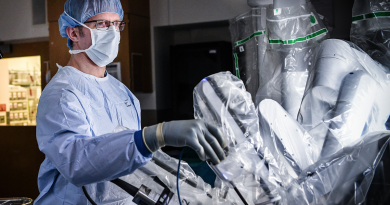What is Dry January and should I do Dry February?
Every day across America, new health trends are advertised to draw in the masses. Many of these trends pertain to cleansing the liver and involve high costs with little benefit. That’s not the case with “Dry January,” however. It is perhaps one of the most cost-effective, easy and beneficial ways to improve your health, even temporarily.

The rules of Dry January are simple: for the entire month of January, abstain from alcohol, even the occasional cocktail. Many people overindulge over the holiday months, so Dry January is an excellent way to reset and start the year on a healthy note. The simplicity of the challenge, coupled with the ability to save money after the holidays, is perhaps why the trend has gained such popularity over the last few years, but it is a practice that can be applied any time of year.
While moderate alcohol consumption is generally considered safe for the liver, many people struggle with moderation. In general, it is recommended that alcohol intake be limited to one drink per day for women and two drinks per day for men. One drink is defined as one beer, one shot of liquor or one glass of wine. This is not a recommendation that is typically followed, and binge drinking continues to be an issue in our society. Unfortunately, binge drinking can contribute to detrimental effects on the liver.
When a person indulges in excessive alcohol consumption, the liver may end up with significant inflammation. While the liver has a remarkable capacity to heal and regenerate, the chronic insult from alcohol-related inflammation may cause the liver to start generating scar tissue. Over time, this scar tissue may increase to cover the entire liver, which is known as cirrhosis. Once the liver is cirrhotic, it can no longer regenerate and long-term health issues ensue. Cirrhosis leads to a wide array of health complications, and patients may ultimately be required to undergo liver transplantation.
Participating in Dry January may facilitate liver healing and help people build a healthy relationship with alcohol. Withdrawing alcohol is key for people with alcohol-related inflammation of the liver. In as little as a few days, the inflammation will begin to decrease, and it is typical to see the liver enzymes decrease rapidly with alcohol cessation. If scar tissue is in the liver, it will take several months to heal. However, the hope is that abstaining from alcohol can help to lay the groundwork for healing. When someone participates in Dry January, they may begin to realize that they feel healthier, less sluggish and have more energy. While less alcohol intake may be a life adjustment, it can yield positive changes in overall well-being. The positive changes that are felt with Dry January will hopefully be carried over in the year’s remaining months.
Dry January is a great concept, but people must continue to work beyond the first month of the year. Alcohol can be consumed safely, but sticking with the recommended drink allotment will help to avoid future health issues. Switching to a mocktail is a great way of continuing the fun while avoiding excess alcohol. Avoiding daily use of alcohol is also important as the liver needs breaks to recover and to continue its most important functions. Stick to one day per week to enjoy the cocktail you’ve been waiting for. Your liver will thank you!
By Line Hinojosa, nurse practitioner in the Michael E. DeBakey Department of Surgery – Abdominal Transplant Center



